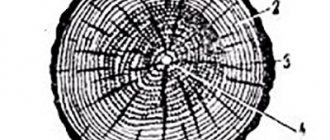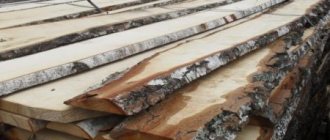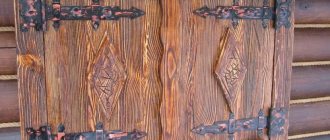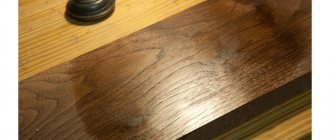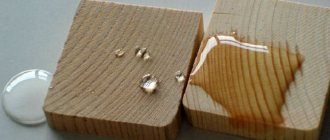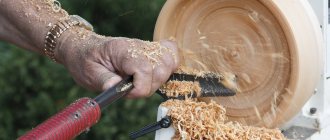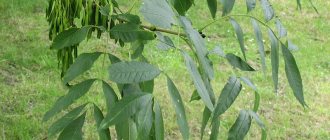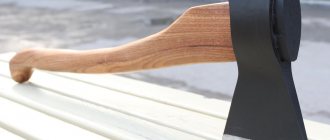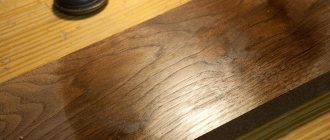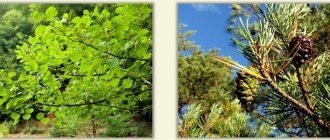Bark
The structure of a tree includes such an important element as bark. It consists mainly of two zones:
- The inner bark (bast) actively participates in the life of the tree. Its tubular cells form a kind of aqueduct, through which nutrients dissolved in water are distributed to other parts of the tree from leaves and buds, where they were reproduced through photosynthesis.
- The outer cortex consists mainly of dead cells. It is covered with cracks. This is a kind of protective shell against insects, animals, cold, heat and other external factors.
wood structure - cellular structure and identification
Almost all wood in furniture production is a product of the stem part of mature trees. The stem, also called the trunk, is often supplied in the form of “logs” for further processing and storage. Therefore, each of the furniture components, be it a flat piece of lumber on a table top or a turned chair leg, can be interpreted in terms of its original position in the wood. Many characteristics are common to all trees and can be discussed without regard to the specific type of wood. In considering possible details of cellular structure, it is appropriate to discuss the coniferous and deciduous species separately.
Tree growth
The structure of a tree implies the presence of three meristematic zones, that is, cells that can divide and multiply. Two of them are located on the roots and buds at the tips of the branches, which allows the tree to grow in length. The third zone is located between the bark and the tree, it is called the vascular cambium. Its cells divide both inward and outward, that is, in all directions. Thus, a new inner layer of bark is formed inside the existing ones. Cambium is one of the most important conditions for tree growth, recovery from injury, and protection from decay.
Root system
Anatomical features of the external structure of the tree include the absence of a pith in the root system, an increased amount of parenchyma, or so-called living cells. The roots also have a small number of fibers and fewer growth rings than the trunk and branches. The underground structure of a tree (root system) is of great functional importance. The roots are adapted to absorb and retain water and minerals in low light conditions. They also require significant oxygen, which they extract from the small spaces between soil particles.
Another important function of the root system is to maintain the plant in an upright position. All trees have lateral roots, which branch into smaller ones and, as a rule, extend in the horizontal plane. Some trees have a tap root that reaches 7 meters. Each root is covered with thousands of hairs, allowing it to more easily absorb water and dissolved minerals from the soil. Most of the root system is in the top layer of soil.
wood structure - color
The color of the wood is an important part from a practical point of view, since it can enhance or detract from the decorative value of the wood, which is mainly due to infiltrates in the cell walls. They can be affected by exposure to light, air and heat, causing the wood's colors to change over time. They can also interact with other materials, for example when oak reacts with iron a color change is noted. Infiltration and entry into cells of small amounts of wood during planing, sawing, sanding, etc., can cause irritation of mucous membranes or dermatitis, which in some cases can be very dangerous. Mainsonia, meiko and teak are specific examples of wood products that may cause more serious adverse reactions. In other cases, a distinctive odor or taste may make the wood particularly suitable or particularly unsuitable for a given application.
Information / Contract offer / Delivery / How to order / Payment / Search results / contacts / Portfolio / Products / Doors / House carvings / Stairs / Shop / Antique furniture /Banquettes, benches, stools / Wooden carved frames /Sofas, armchairs, chairs / Mirrors / Fireplaces carved from wood / Dressers and cabinets / Furniture in the hallway / Furniture for children and mothers / Minibars, bottle holders / Overlay decor / Shelves for the kitchen / Carved trim and craftsman services / Decorative tables / Tables / Cabinets, wardrobes / Furniture / Educational material / Manual / Carved frames / Wood carving / Master services / Call a master / Design services / Consulting services / Online consultations / Primary design and calculation
Core
As it grows, the old xylem cells in the center of the tree become inactive and inactive and finally die, forming rings filled with glucose, dyes and oil, so the core is usually darker than the rest of the trunk. Its main function is to support the tree. Xylem consists of young layers of wood that transport water and nutrients from the roots to the leaves and other parts of the tree. The cambium is a thin layer of tissue that, as it grows, produces new cells that become either xylem or phloem. In other words, it is what increases the diameter of the trunk and branches.
wood structure - wood research
Wood research usually begins at the cellular level. This is useful and important for thinking about wood as a system of cells. Wood cells have evolved to meet the needs of wood, on the one hand, to be good structural beams and columns, on the other hand, to provide a system for conducting sap and for storing food material. The cells are specialized for these mechanical and physiological functions, primarily being elongated and fiber-like, running parallel to the axis of the tree trunk. The alignment of these longitudinal cells in the wood determines its “grain direction.” The tree trunk "grows" in diameter by adding cylindrical layers of cells that we call tree rings. The combination of the axial direction of the longitudinal cells, and their arrangement, in the annual layers, gives the wood tissue a three-dimensional orientation, and the properties of the wood differ significantly in their structure in three directions.
The main chemical components of the cell wall substance are cellulose, chemical additives and lignin - strikingly similar to the entire mass of the entire forest. However, such part as living sapwood (the outer, functionally active part of the trunk), when converted into the non-living core of the tree, forms chemicals known as extracts, in rather small quantities they can convey significant changes to some properties.
Although many general principles can be applied to all woods, it is nevertheless important to appreciate the wide range of differences that exist. For example, in general, density is probably the one physical characteristic of wood that best predicts many other properties and determines its potential use. Density is the mass of a unit volume of a substance, that is, mass divided by volume. In SI units, density can be expressed in kilograms per cubic meter (kg/m3), grams per cubic centimeter (g/cm3) or pounds per cubic foot (lb/ft3).
The term specific gravity was the former term for the ratio of the density of a substance to water. Currently, the term relative density is used instead. Realizing that the range of relative densities is less than 0.1 for the lightest woods and more than 1.3 for the heaviest ones shows obvious differences between forests.
In the traditional approach to wood classification, botanical taxonomy serves as a logical framework by which wood is classified into one of two large groups called softwoods and hardwoods. The words softwood and hardwood are unfortunately poor terminology because they do not accurately reflect the relative hardness and density of the wood they represent. Rather, the woods of the two groups differ in the type and arrangement of their cell composition. Conifers belong to a group of trees called Gumno-sperm trees - primitive, coniferous or cone-bearing trees with bare seeds and mainly needles as leaves. Accordingly, deciduous trees belong to a group of trees, more accurately called angiosperms. In fact, based on cellular differences, woods from these two groups can be easily distinguished visually at relatively low magnification. Further differentiation of wood within each group for identification involves examining additional cellular structures, usually with microscopic magnification. The systematic study of anatomy goes hand in hand with the study of wood structure, although a friendly relationship with anatomy is also fundamental to an understanding of other aspects of wood.
The relationship between wood and moisture is probably the most pressing concern in wood use and conservation than any other aspect of wood properties. Although such problems can be complex, the basic principles can be easily resolved. Firstly, trees are wet because they contain a large amount of moisture in the form of sap. Second, because lumber taken from trees is dried for its intended use, it loses much of its moisture content. Thirdly, the loss of this moisture affects many properties, such as: an increase in strength, but a decrease in size (shrinkage). Fourth, after initial drying, the wood remains hygroscopic and continues to adsorb or release moisture, and therefore change size and other properties, as the relative humidity of its environment changes.
The next paragraph will go into more detail on the various aspects of the relationship between the appearance, structure and function of wood in order to properly understand the many problems that furniture makers face.
Wood parts for children
The structure of a tree is best explained to children using visual material. A variety of pictures, coloring pages, and illustrations can help introduce children to a certain type of vegetation. You can use logic tasks, picture making exercises, and so on. The main thing is not to overdo it and not to overload the child with unnecessary details. It’s better to start with one image, gradually adding and complicating it with other, more detailed drawings. You need to consolidate what you have learned in an interesting way, using riddles, rhymes and entertaining stories. When you explain the structure of a tree to kids, the diagram and definitions should be as simple and understandable as possible. For example, a root is the part of a tree that remains underground. The trunk supports the crown and branches on which the leaves grow. The bark protects the tree from heat, cold, moisture loss and damage, and so on.
Trees are an important part of our world. They provide wood for construction and pulp for making paper. They provide habitat for all types of insects, birds and other animals. Many types of fruits and nuts grow on trees, including apples, oranges, walnuts, pears and peaches. Even tree sap is useful and serves as food for insects and more. Trees also help keep the air clean and the ecosystem healthy. We inhale oxygen and exhale carbon dioxide. Trees absorb carbon dioxide and release oxygen. Just a perfect partnership! The structure of a tree (photo presented in the article) includes a certain number of components, each of which plays an important role in the life of the entire plant.
wood structure - drawing
Many types of designs are recognized. The textures mentioned above are the main components resulting from the entire variety of grains (with which many other components interact). In addition, the pattern can be obtained from the distribution of individual types of tissues in wood. An example of this is the broad rays of the true oaks and the Australian silky oak, the patterns of which are called silver figures, formed by the specific distribution of the rays of the tissues in these trees.
Alternating layers of dark, dense latewood and light, less dense earlywood form flame patterns in some softwoods, such as Douglas fir, when the cutting plane is visible when sawing. Distributions of woody parenchyma are widely visible in hardwoods, and also result in a flame pattern more commonly known as moiré. A similar pattern can also be found in woods with alternating layers of different colors, such as striped Ebony. The position and decorative effect of the design depends not only on the correct cutting of the wood, but also on its natural shine, thanks to the ability of the cells to reflect light. Also important, although not necessarily related to shine, is the wood's ability to take a good polish.
